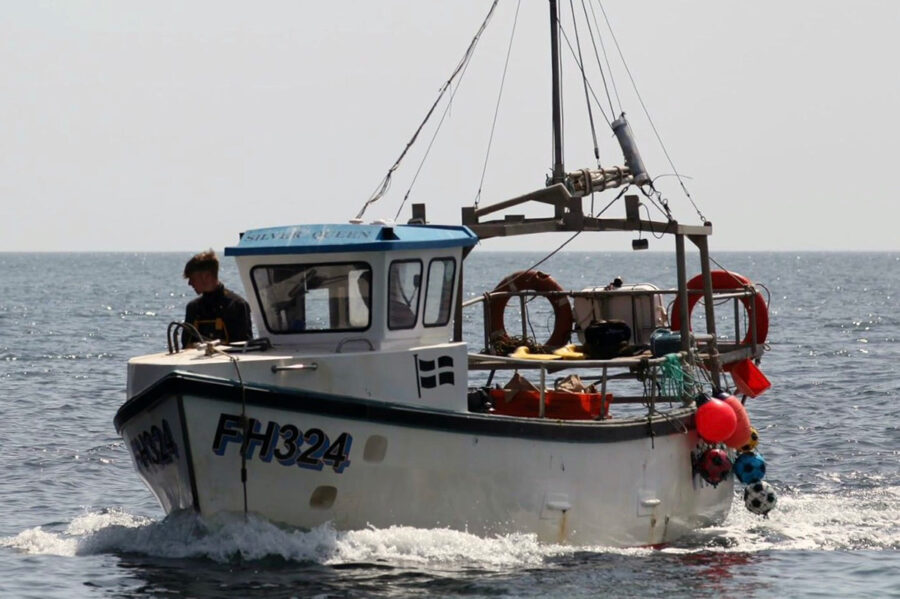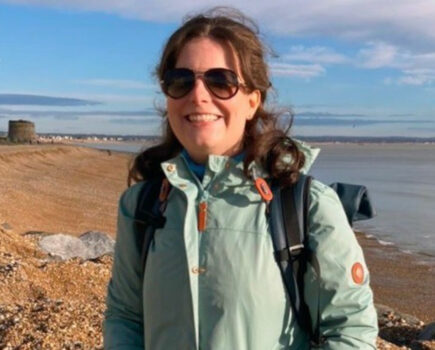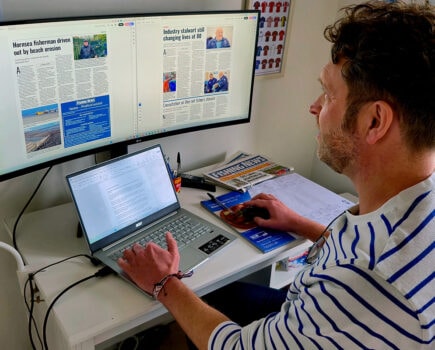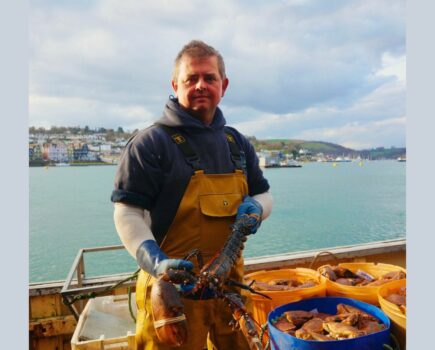“I wasn’t the best at school,” early-career fisherman Mat Price told Fishing News. “Three days before I was due to start college, I called up John Trewin – a fisherman in Cadgwith –and asked if he was looking for a young lad who wanted to learn about commercial fishing.”
After meeting up with John the following day, Mat’s career path was set. “I went and had a chat with John. Straight after that I went and did my sea survival ticket – and I’ve now been fishing with him for two years this month.”
Eighteen-year-old Mat fishes under John’s tutorship on the 7.5m Silver Queen FH 324, working out of Cadgwith Cove on Cornwall’s Lizard peninsula. The pair target mainly crab, but also diversify into other species – including bass, crawfish and lobster – depending on the tides and the season.
“We’re typically a crabber, but we do a bit of everything. The last neap tide we shot for craws. We also have a licence for bass, and do a lot of netting as well.”
In addition to fishing commercially, Mat spends much of his spare time angling – a hobby that proved pivotal to his choice of career.
“I’ve grown up angling, and have always done rod and line fishing. I still do a lot of lake fishing on my days off. My dad is big into leisure angling, and he owns a tackle shop in Penzance. So I’ve always liked fishing, and the aspect of not knowing what you’re going to catch. Fishing gets my. heart beating a bit faster – it gives you a good buzz.”
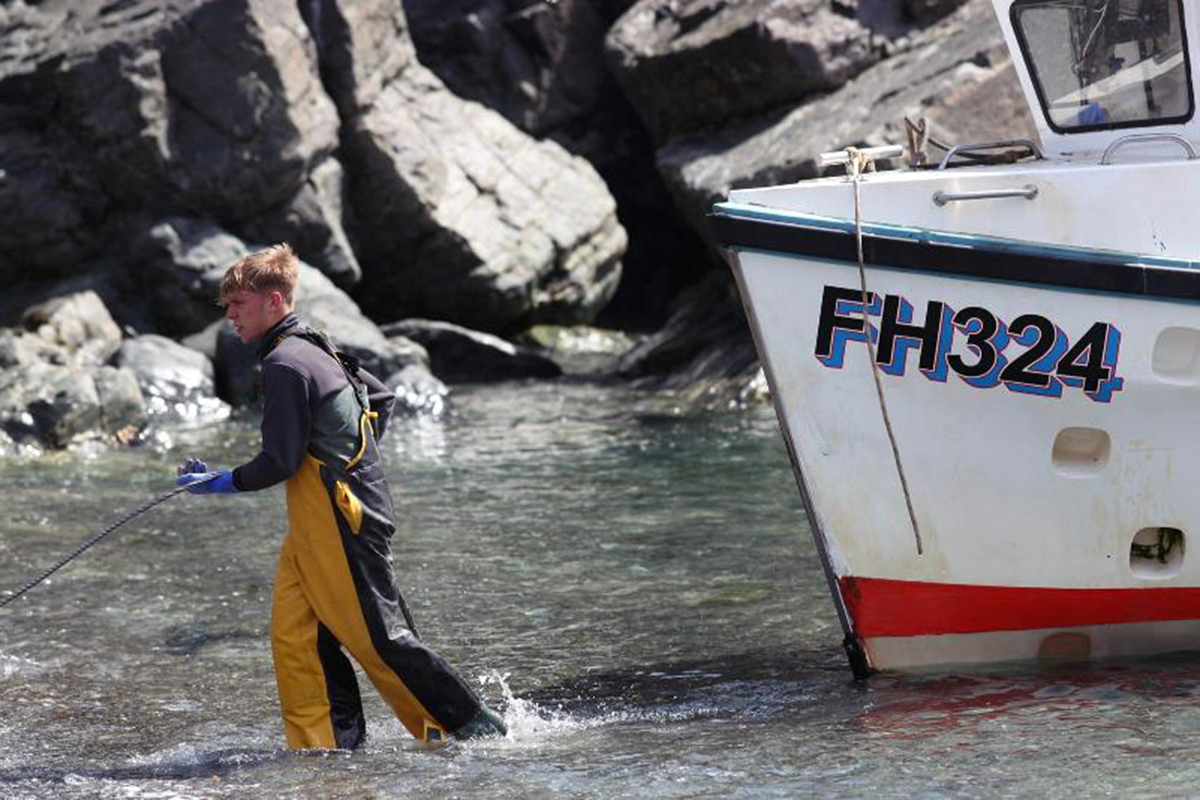
A key moment in Mat’s working day is hooking the beach-launched Silver Queen up to the cove’s tractor – with a good pair of waders essential to the operation.
When it comes to a typical day’s crabbing, it’s the buzz of the alarm clock that quickens Mat’s pulse. “I wake up at around 6am, ready to get to John’s house for 6.30am. He lives about a minute and a half away from the boat, so I’ll jump in his van, and we’ll head down to the cove.”
Cadgwith’s small New Holland tractor is in high demand by the beach-launched fleet. “The first job is to get the tractor – if it’s not already in use. We’ll then go to the cold room and load the rays and gurnards which we use for crab bait. Sometimes, if the boats are close together, we get the tractor right up to the side of the boat, and can load all the bait and the other equipment up.”
With everything loaded, it’s then a case of getting launched. “If someone at the cove hasn’t gone yet, they’ll push us out with the tractor. The tractor has a rubber roller on the front of it which is pushed up to the bow. The tractor then drives forward, pushing the vessel backwards out into the water until you’re floating. However, if nobody is there to push the boat out, then I’ll have to put my waders on…”
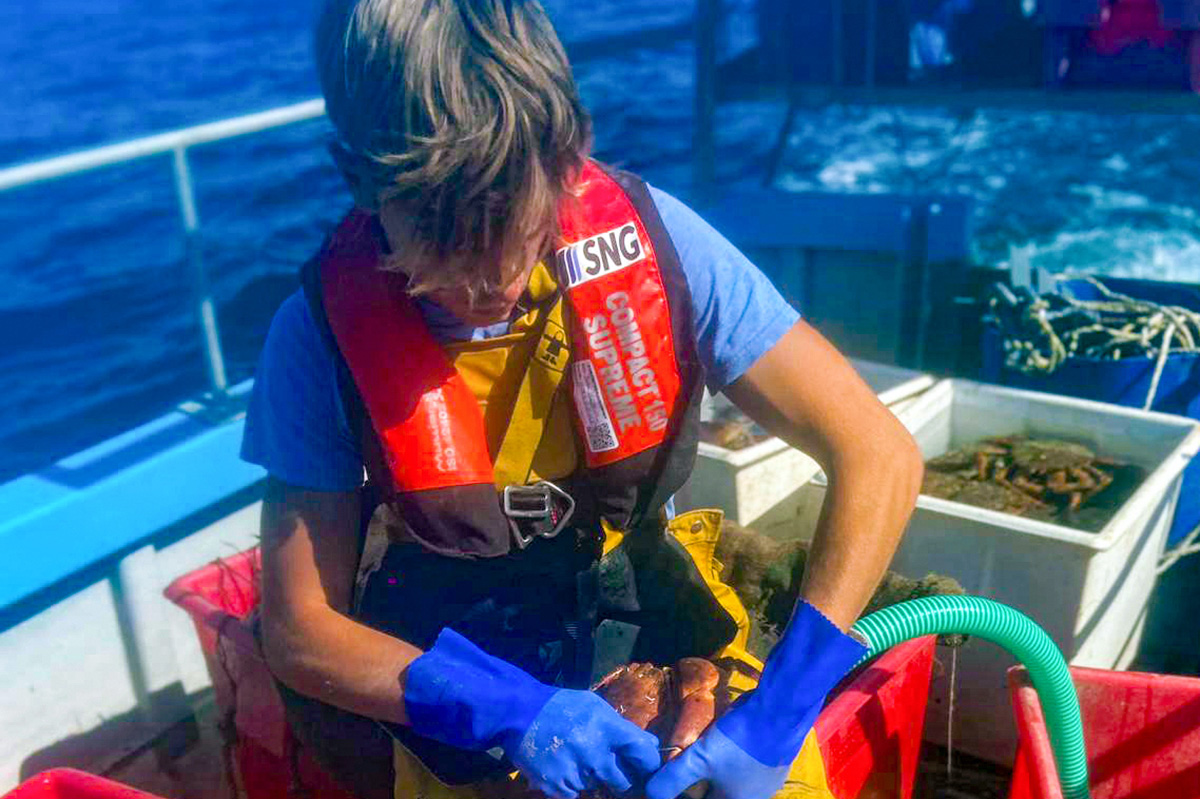
Mat onboard the Silver Queen nicking a crab. He is one of a number of young fishermen in the South West who are members of the Cornish FPO’s Young Fishermen Network (YFN), which aims to promote fishing as a career and enable young fishermen to connect. “The YFN is a great idea. Most people don’t really know what you’re talking about when you tell them about your job – so it’s good to be able to talk about similar things with other young fishermen.”
Once safely out of the cove, Mat turns his attention the pots. “Normally I’ll start off by chopping bait on the steam out. We’ve got pots out up to about five to six miles. Once the bait is all chopped, I’ll then organise the deck ready for when we start hauling, so the bins are set out and the weight is all evened out correctly.
“For shooting, the pots are all stacked, and we’ll shoot away from our stern – the vessel has an open stern. We work around 10 strings of pots, and in between strings, I’ll nick up the cock crabs and band the lobsters, and also organise the bins, into which water is pumped. Some of the hens like fighting – so I have to try and organise the crabs so they’re not damaging one another.”
Around midday, and with all the gear worked, the Silver Queen turns for home. Once back in Cadgwith, Mat’s next task again involves the cove’s tractor.
“We will get back into Cadgwith in mid-afternoon. John will drive the boat in, right up to the beach. I’ll then jump off the front of the boat – whilst trying not to get my feet wet, hopefully. That’s one of the worst things you can do. If you get wet feet, it is horrible. That’s why I soon invested in some good waders.
“I’ll pull the hook down to the winch – if it isn’t already down – and then hook up the boat. It’s very rare that somebody isn’t down at Cadgwith – there’s usually a lot of people down the cove – so someone will winch us up normally, but I’ve had to winch us up before on occasion.”
Mat then helps to unload the day’s catch ready for collection. “Typically, we’ll unload all our shellfish straight off the tractor, which will be reversed up to where our shellfish normally goes. A lorry will then come and collect all the shellfish and take it to Newlyn. All the vessels in the fleet will be in at roughly the same time to meet the lorry.
“After that, it’s just a case of fuelling up the boat and tidying up – and that’s pretty much me for the day.”
This story was taken from the latest issue of Fishing News. For more up-to-date and in-depth reports on the UK and Irish commercial fishing sector, subscribe to Fishing News here or buy the latest single issue for just £3.50 here.
Sign up to Fishing News’ FREE e-newsletter here.

